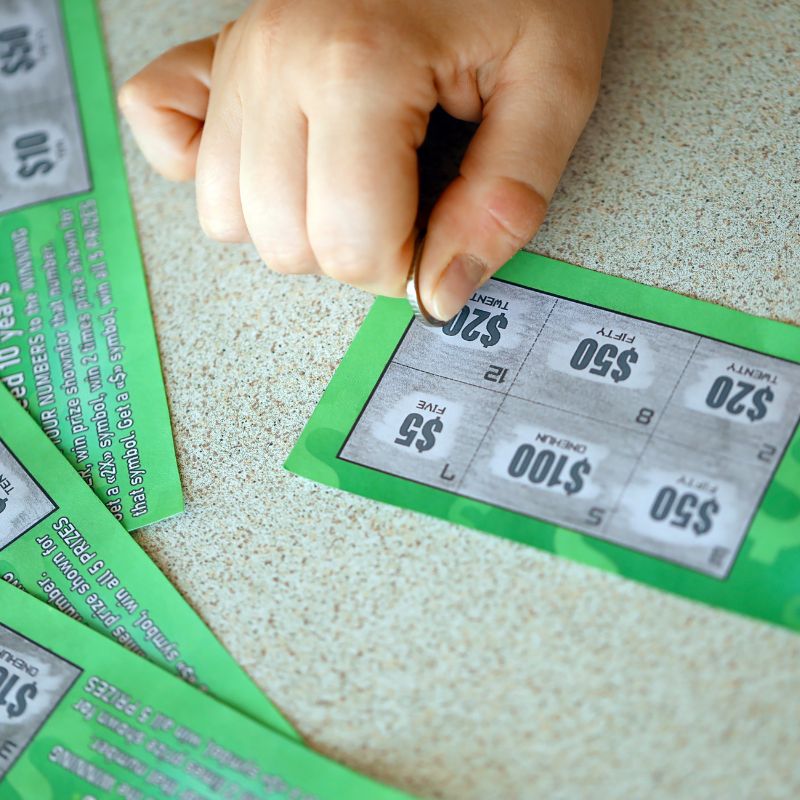Scratch Card Roll Sizes and Buying Limits Explained
Scratch cards are a straightforward way to play and are available both in shops and online. If you’re unfamiliar with them, you might want to know how they’re sold, what “roll size” means, and whether there are any limits on how many you can buy.
This article outlines how scratch cards are packaged, how many may be bought at once, and how this differs between retail and online options. Read on to learn more.

How Many Scratch Cards Are in a Single Roll?
In the UK, scratch cards sold in shops are packaged in rolls. These rolls vary in size depending on the price and type of the card. As a general guide:
- £1 scratch cards are typically packed in rolls of around 180
- £2 scratch cards are often in rolls of approximately 120
- £3 and £5 scratch cards are usually in rolls of about 60
This packaging system helps retailers manage their stock. Each card has a unique serial number linked to a batch, ensuring traceability.
Online scratch cards are digital and don’t come in physical rolls. Each game is generated independently by the site’s Random Number Generator (RNG).
Do All Scratch Card Games Have the Same Roll Size?
As we’ve previously covered, roll sizes vary. Lower-priced cards tend to be packaged in larger quantities. Higher-priced cards generally come in smaller rolls. Special editions or seasonal releases may use different formats.
All cards in a roll come from the same print run. Each carries a serial number and is designed to track distribution and authenticity.
For digital scratch cards, roll sizes do not apply. Each game has its own independent outcome.
What’s the Most Scratch Cards You Can Buy at Once?
Since 1 October 2024, a transaction limit applies to National Lottery scratch cards in the UK. No more than 10 National Lottery scratch cards may be purchased in a single in-store transaction.
Retailers may also apply their own limits. These can vary between stores and may be used to encourage fair access for other customers. If you attempt to buy a large quantity, staff may check that you are comfortable with the spend.
When playing online, licensed operators follow UK Gambling Commission (UKGC) rules. These include deposit limits, session reminders, and affordability checks. You could also choose to set personal spend or deposit limits within your account. Always remember to gamble responsibly and within your means- never wager more than you can afford to lose.
Buying Full Rolls: What You Need to Know
There is now a cap of 10 scratchcards per transaction, which applies across retail outlets. Staff may also ask questions or recommend purchasing fewer cards, particularly if a larger purchase could limit availability for other customers.
It’s important to understand that even if you could purchase every card in a roll, it does not increase the likelihood of receiving a winning card. Each scratchcard has its outcome pre-determined during the manufacturing process, and the result of one card does not influence another.
Taking a moment to reflect before making a purchase, especially when it involves a higher spend, could be useful.
How Many Winning Scratch Cards Are In a Roll?
There is no guaranteed number of winning cards in a single roll. Cards are printed and mixed before being packaged. This means a roll could contain several winning cards, one, or none.
The odds printed on the card, such as “1 in 4”, refer to the overall number of cards produced for that game. These odds do not apply to individual rolls or batches.
Each card is designed to offer a separate chance, based on the full print run of the game.
Does Buying Multiple Scratch Cards Increase Your Odds?
Buying more than one card gives you more entries into the game, but the outcome of each remains the same. For example, if the odds are “1 in 4”, this refers to the total game production, not a guarantee across any specific number of cards.
Each scratch card is independent. Buying several does not increase the odds per card. No pattern or sequence will affect the result.
Online, outcomes are generated using RNGs, which work on the same principle—each card is independent.
**The information provided in this blog is intended for educational purposes and should not be construed as betting advice or a guarantee of success. Always gamble responsibly.
*All values (Bet Levels, Maximum Wins etc.) mentioned in relation to these games are subject to change at any time. Game features mentioned may not be available in some jurisdictions.

